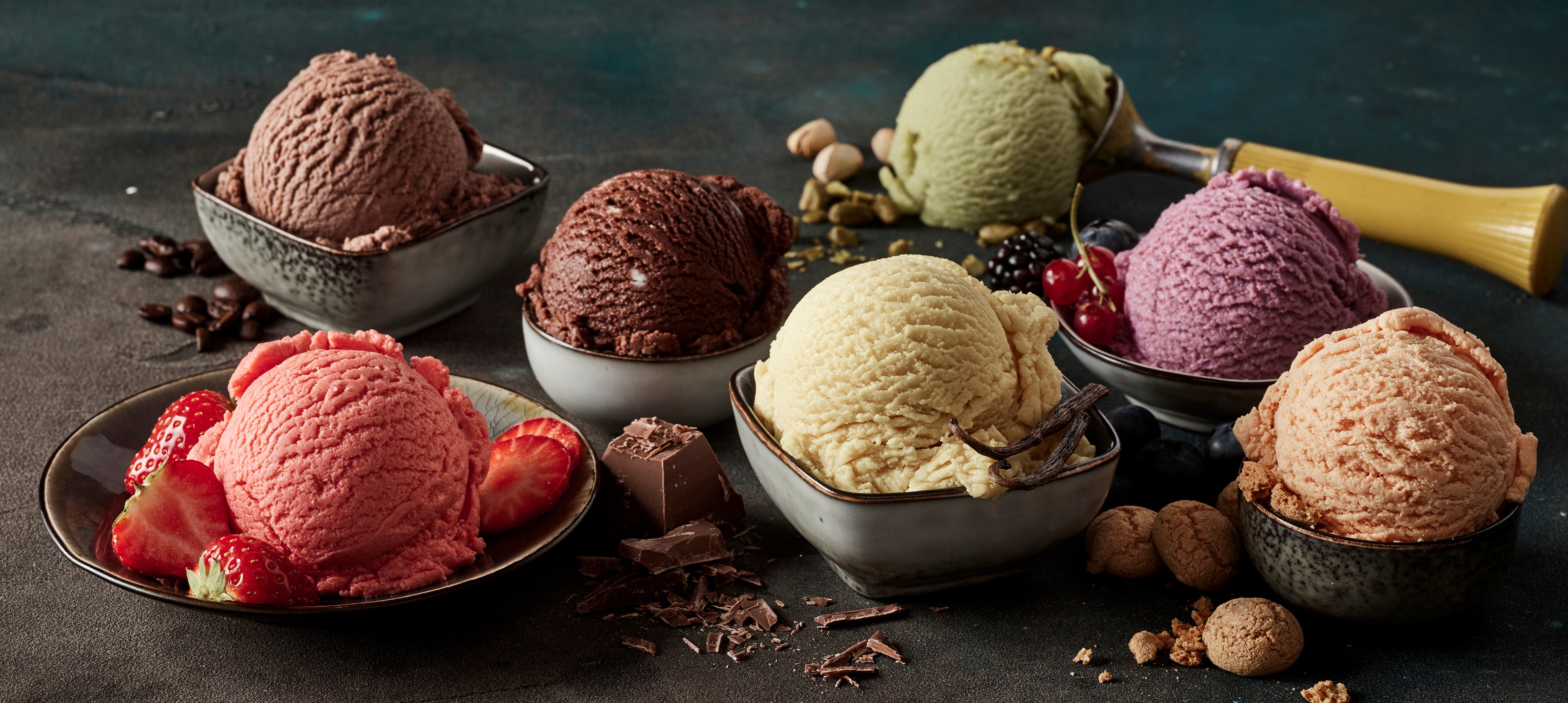Air and Water fundamental elements in ice cream
The Science of a Perfect Scoop: Understanding Ice Cream Ingredients

The fundamental ice cream ingredients are often simple, but the science behind balancing them is key to a perfect result. To begin with, the primary components we will explore are:
- Air (Ice Cream Overrun)
- Water
- Fat (Dairy and Vegetable)
- Skim Milk Powder
- Neutral Flavors
- Sugars
However, no single perfect balance exists for all types of ice cream. To create an ideal texture, one must consider the unique properties of each recipe family.
1. Air (Ice Cream Overrun)
Air is one of the most basic yet essential elements of ice cream. Without it, your product would be a solid, dense block. Instead, air makes it a light, creamy treat. Furthermore, air is weightless, unfreezable, and a natural insulator.
How We Incorporate Air:
During the churning process, the ice cream machine's agitator folds air into the mix as it cools. This process is most effective between 4°C and -4°C. As the mixture gets colder, it becomes firm enough to trap the air. This breaks it into tiny bubbles, which we then distribute throughout the ice cream.
Factors for Good Aeration:
Several factors help achieve the correct amount of air. For instance, a proper balance of the mixture, the type of fat, and the presence of milk proteins all play a role. Additionally, the quality of stabilizers and emulsifiers is crucial for perfect aeration.
The Role of Overrun:
We call the increase in volume from this incorporated air "overrun." Because air acts as an insulator, it makes the final product lighter and creamier. An ideal overrun for artisanal gelato is around 35%. Therefore, a liter of well-made ice cream should weigh approximately 740 grams.
2. Water
Quantitatively, water is the most significant ingredient in any ice cream or sorbet. The total amount of water is the sum of the water contained in each ingredient. For example, milk contains approximately 88% water, while cream contains around 60%.
Balancing Frozen vs. Unfrozen Water:
In an ice cream mix, we must blend the water and solids into a homogeneous mixture. This process prevents "free" water molecules from forming large, unpleasant ice crystals. After churning, the ice cream exits the machine at a temperature of -10°C to -12°C. Next, it must cool rapidly in a blast chiller to reach -18°C at its core, which stabilizes the water.
A key to achieving the perfect texture is managing the antifreeze power (PAC) of your mix, primarily through the addition of sugars. Consequently, by balancing the PAC, you ensure no more than 75% of the water is frozen at your serving temperature. This is essential for a scoopable texture. Finally, always use purified water for a clean, pure taste.
Start with Perfectly Balanced Ice Cream Ingredients
AussieBlends offers a wide variety of perfectly balanced Ice Cream Mixes to cater to the needs of professional makers. Our product range includes both Dairy Mixes and Vegan Mixes. In short, we eliminate the guesswork in creating the perfect base with the best ice cream ingredients.

